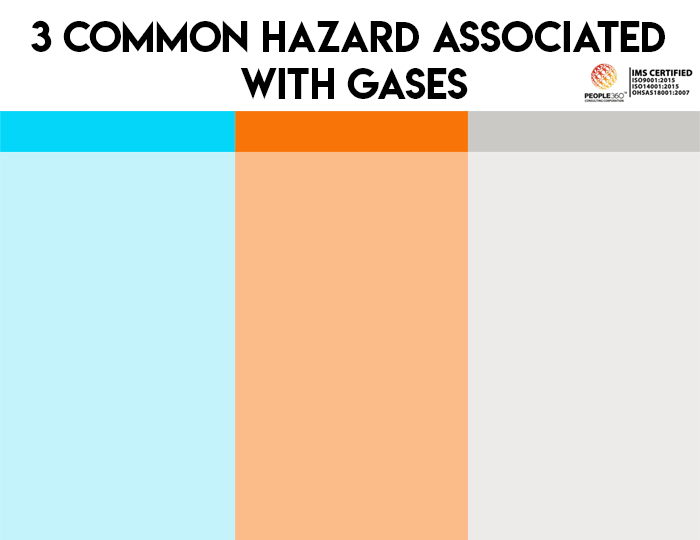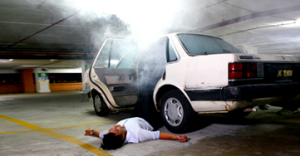
Gas is one of the 4 states of matter (solid, liquid, gas, and plasma). Gas particles are widely separated from one another, and consequently, have weaker intermolecular bonds than liquids or solids. Hundreds of elements and substances exist in gaseous state, and each at different situation can potentially be dangerous.
3 Common Hazards:
- Suffocation
- Explosion
- Poisoning
Suffocation
Oxygen is essential to living. It exists in air at a concentration of 21% (per volume). If it goes down to at least 19% it will start to cause discomfort and start to impair thinking and attention. Below 10% it can cause severe asphyxiation. Asphyxia happens when there is insufficient oxygen in the body, leading to nausea, loss of consciousness, and in severe cases even death. Decrease in concentration of oxygen can be caused by consuming the oxygen in the air (without replacing it); by displacement by inert gases such as carbon dioxide or nitrogen; or when a denser gas occupies the space where oxygen is; or by reaction of oxygen with other substances.
 Explosion
Explosion
Some gases have what is called an Upper and Lower Explosive Limit. Between the Upper and Lower Limit, gas when introduced with enough heat could ignite, and depending on the substance, the reaction can be fast and strong enough to be an explosion.
Examples of explosive gases or vapor:
Cooking gases such as, LPG, natural gas, methane, propane, butane.
Industrial gases such as hydrogen and gasoline vapor.
Poisoning
Some substances can cause adverse effects when they enter the human body. The degree of damage may vary depending on the concentration present. There are a lot of poisonous substances, some of the common gases usually encountered are:
 Carbon Monoxide – is a tasteless, colorless and odorless gas which is highly toxic. A product of incomplete combustion usually coming from internal combustion engines (ICE) such as cars and generators, when inhaled in excessive levels, inhibits circulating blood’s ability to distributing oxygen.
Carbon Monoxide – is a tasteless, colorless and odorless gas which is highly toxic. A product of incomplete combustion usually coming from internal combustion engines (ICE) such as cars and generators, when inhaled in excessive levels, inhibits circulating blood’s ability to distributing oxygen.
Common accidents occur when people leave their car running in places that are not well ventilated. Incomplete combustion caused by lack of oxygen in the area causes buildup of carbon monoxide. Since it has no smell and no color, it is difficult to detect.
Hydrogen Sulfide –Colorless, flammable, poisonous and corrosive, H2S gas is noticeable by its rotten egg smell. With toxicity similar to carbon monoxide, which prevents cellular respiration, severe exposure could lead to death. Hydrogen Sulfide (H2S) is a gas commonly found during the drilling and production of crude oil and natural gas, plus in wastewater treatment and utility facilities and sewers. The gas is produced as a result of the microbial breakdown of organic materials in the absence of oxygen
Solvents – as well as being flammable, solvents usually, when inhaled in large concentrations causes damage to the central nervous system of the human body.
Sources:
- Anderson, John D. (1984). Fundamentals of Aerodynamics. McGraw – Hill Higher Education
- 2 Dangers of Oxygen-deficient atmosphere – https://www.airproducts.com/~/media/Files/PDF/company/safetygram-17.pdf
- Toxic Gases – https://www.sc.edu/ehs/training/Confined%20Space/06_toxic.htm
- 4 What you need to know about hydrogen sulfide – https://www.blacklinesafety.com/blog/h2s-gas-need-know



